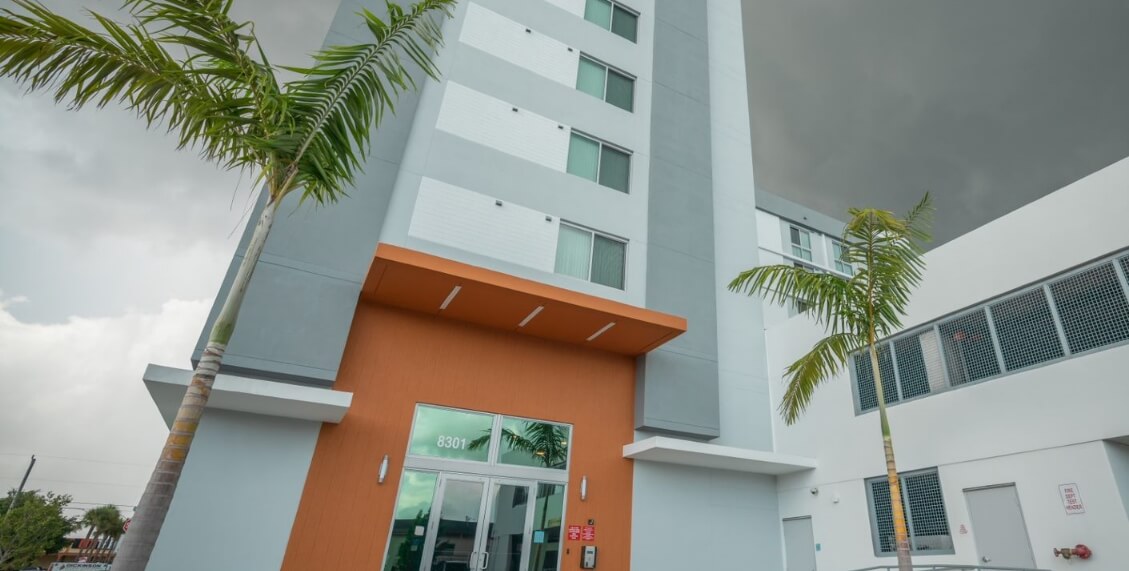Florida is a perennial pick on roundups of states with the best weather. But while sunshine is indeed abundant in “the Sunshine State,” Florida is also known for something else: hurricanes.
Spanning from June through November, hurricane season is a fact of life for Floridians—as is the need for hurricane preparedness.
Here, we’ll take a closer look at hurricane preparedness plans. We’ll also answer common questions, including:
- What is a hurricane preparedness plan?
- What are the key components of a hurricane preparedness plan?
- What else can I do to protect my home and loved ones during a hurricane?
Read on for everything you need to know about hurricane preparedness plans, why they matter, and other pivotal steps you can take to prepare for a hurricane—before one is bearing down on you.
What is a Hurricane Preparedness Plan?
While there are many upsides of living in Florida, the reality is that hurricanes can strike at any time. When they do, they can cause massive destruction. Even more alarming? Scientists say that due to global warming, today’s storms are more severe with increased risk of flooding and wind damage. And they’ll only get worse moving forward.
Enter hurricane preparedness plans. These comprehensive action plans are designed to keep people and property safe during hurricanes and other extreme weather events.
Having a hurricane preparedness plan in place can help you prepare for the worst-case scenario. In addition to protecting you, your home, and your loved ones, your hurricane preparedness plan can also provide invaluable peace of mind during hurricane season.
Elements of a Hurricane Preparedness Plan
Comprehensive hurricane preparedness plans cover all aspects of hurricane preparedness, including the following:
- Evacuation plan
Depending on the trajectory of a storm, you may be advised to shelter in place or to evacuate. (To receive real-time alerts, download the FEMA app and make sure your phone is set to receive signup-free Wireless Emergency Alerts.) No matter how safe you think your home is, ALWAYS adhere to evacuation orders.
In the case that you are advised to evacuate, your hurricane preparedness plan should identify safe evacuation routes and make arrangements for transportation, such as gassing up your car. You should also know where you’ll stay when you get there.
- Shelter-in-place plans
If you are sheltering in place, be prepared to go without basics, such as water, power, gas, phone, and internet for an extended period of time. (Know the location of the nearest shelter and routes to get here in the case that you do have to evacuate.)
- Emergency supplies
The American Red Cross recommends having a “Go-Kit” with at least three days of supplies and a “Stay-at-Home Kit” with at least two weeks of supplies. These should include non-perishable food, water, batteries and chargers, a fire extinguisher, flashlights, first-aid supplies, and other necessities to see you through during and after a storm—whether you evacuate or shelter in place.
You should also have at least a one-month supply of medications and medical supplies/equipment.
- Secure your home
Take steps to secure your home, such as bringing inside or anchoring loose outdoor objects, trimming or removing trees that could fall on your home, cleaning out downspouts and gutters, stocking up on plastic sheeting, sandbags and other protective materials, and shuttering or boarding up your windows and doors, if necessary.
- Communication plan
When phones are down and people are scattered, how will you reach your loved ones? Your communication plan should identify a designated point person for communication, determine how you will communicate with family members, and delineate emergency contacts and contact information. Make sure to familiarize all family members with your communication plan.
- Insurance coverage
Review your insurance policy to ensure that you have adequate coverage in the event of flooding or wind damage.
- Important documents
Gather important documents, such as insurance policies, identification, medical records, wills, passports and other IDs. These should be kept in a safe, accessible, waterproof location.
Proactive Hurricane Preparedness: Hardening Your Home
Intense winds can rip off roofs, blow doors off their hinges, and shatter windows, turning window glass into dangerous airborne projectiles.
While a hurricane preparedness plan ensures that you’ll be prepared if you are in the path of a storm, there are some additional things you can do to proactively strengthen your home’s vulnerabilities—specifically, your roof, windows, and doors. These upfront improvements—which can be taken at any time—will ensure that your home is optimally protected from all storms, whenever they occur.
In addition to assembling your hurricane preparedness plan, consider these home hardening strategies:
- Consult with a licensed, insured roofer or contractor can help you determine any necessary retrofits to your home’s roof and/or frame to safeguard it from collapsing during high winds
- Elevate your heating system, electrical panel, and water heater to protect them during flooding
- Upgrade to high-performance impact resistant windows and doors, which are constructed with layers of glass and extra-sturdy frames (unlike traditional windows and doors, which aren’t designed to withstand strong winds and flying debris)
- Install a reinforced garage door to mitigate potential intrusion through this large and vulnerable surface
Another excellent reason to harden your home with impact doors, impact windows, and other updates? These home improvements come with other benefits as well, including everything from increased energy efficiency to noise reduction.
If you live in Florida and haven’t yet formulated your hurricane preparedness plan, there’s no better time than right now to get started. If you already have a plan, when was the last time you updated it and/or reviewed it with everyone in your household?
Because while you may not be able to control the weather, you can control how prepared you (and your home) are to withstand whatever it sends your way.

